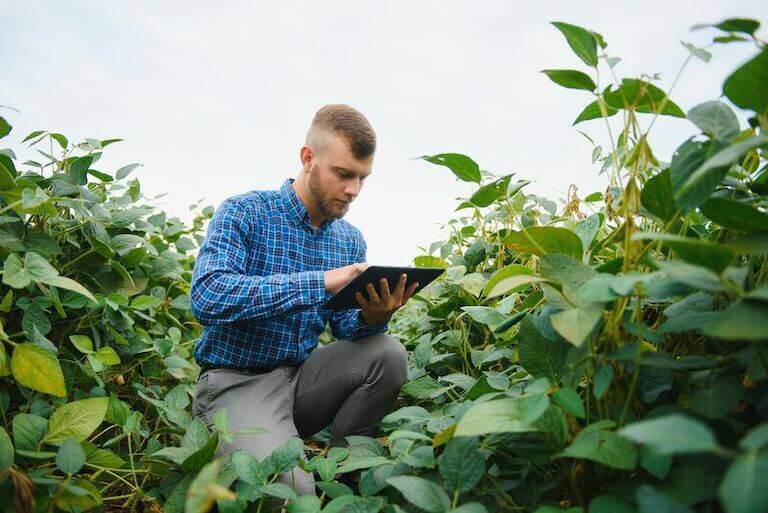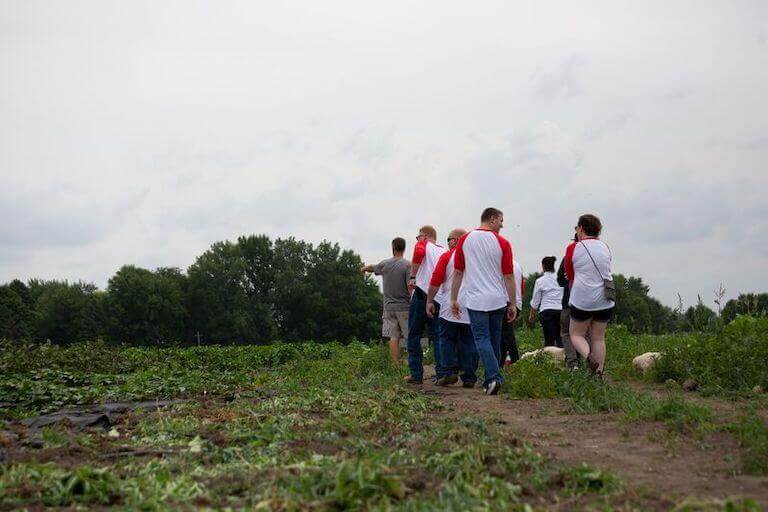Sustainability is a complex topic with many different subsets and segments. So if a restaurant says it’s sustainable, that could mean hundreds of different things! Therefore, food producers and restaurants are beginning to be more precise with their language.
One sustainability-related term you may have heard of is “carbon-neutral.” However, even if you know a bit about this term, do you understand how it relates to the food industry, both now and in the future?
What Is Carbon Neutral?
Carbon neutral refers to offsetting carbon emissions by implementing practices that remove carbon from the atmosphere. The result is net-neutral carbon emissions.
While the term carbon neutral is loosely used throughout various scientific and business communities, there is also a carbon neutral certification showing that a company’s carbon emissions have been measured, and the company has taken steps to offset these documented emissions.
So, what exactly does becoming certified carbon neutral entail? First, companies undergo a third-party audit to determine the amount of carbon they produce via carbon dioxide and methane emissions. This may involve calculating the amount of electricity a company uses to heat and cool its buildings, determining the energy used to produce the packaging the company uses, or figuring out how its land-use practices emit or sequester carbon.
After carbon emissions have been calculated, it’s time to determine how companies can lower or offset their carbon output. This may involve reducing carbon emissions by switching to alternative forms of energy or adjusting supply chains to limit the number of delivery trucks a company sends out each week.
Once a company lowers its emissions, it begins the process of offsetting its remaining carbon emissions by contributing to practices that capture carbon from the atmosphere. A few types of carbon sequestration efforts include planting trees, supporting efforts to capture methane from livestock farms, and donating money to allow for the construction of alternative energy sources like solar and wind.
Carbon Emissions in the Food Industry
So, why should culinary professionals and those involved in the food industry care about carbon neutrality? First off, the food segment plays a big role in global greenhouse gas emissions. When you take into account crop production, animal agriculture, food processing, and transportation, the food industry accounts for 26% of these emissions!

Agricultural practices have an impact on the amount of carbon emitted.
That makes it clear that food plays a big role in climate change. Not only can reducing carbon emissions help slow the effects of climate change, but it may also help companies appeal to consumers. A 2021 survey found that 72% of consumers said that sustainability was a very important or somewhat important factor when it came to purchasing products, and 68% said they were willing to pay more for sustainable products.
By implementing carbon neutral practices, companies can increase their sustainability and also increase their appeal to consumers.
How Does Carbon Neutral Apply to Food Products?
Any company can attempt to become carbon neutral, including both large and small food businesses. While the steps to becoming carbon neutral are the same as they are for any other industry, those in the food industry often have to consider specific factors related to the size of their carbon footprint.
First, there’s the factor of ingredient sourcing. Agriculture, forestry, and land use accounts for 18.4% of global greenhouse gas emissions, so both the ingredients used and how these ingredients were produced can have an impact on a food business’s carbon emissions.
When it comes to selecting ingredients, it’s important to realize that the production of some foods emits more carbon than the production of others. For example, producing one serving of beef involves emitting 6.61 pounds of carbon dioxide, while producing one serving of eggs emits 0.89 pounds and a serving of legumes emits 0.11 pounds. This is one reason why some people choose to eat a plant-based diet.
It’s important to note that how food was produced also impacts carbon emissions. Let’s look at beef as an example. Typically, cattle spend the beginning of their lives on grass pastures and then are either finished on grass or on grain in feedlots. Research suggests that raising and finishing beef in a diverse pasture-based system—meaning the animals spend their whole life on pasture—leads to net greenhouse gas emissions that are 66% lower than those produced in conventional systems that finish animals in feedlots.
This variation underscores the importance of understanding how food is produced. One way individuals can learn the basics of food production and how production practices can vary depending on the system is through programs like Escoffier’s Farm to Table Experience.

Escoffier’s Farm to Table Experience can provide a hands-on introduction to farming practices.
Along with the actual ingredients used in a food product, production methods can have a big impact on carbon emissions. Waste—of food, energy, and packaging—contributes to higher carbon emissions, so learning how to recognize and limit this waste is an essential part of reaching a carbon neutral status.
Seeking Carbon Neutrality in Restaurants
Restaurant managers and chefs who are interested in increasing the sustainability of their restaurants may also want to investigate becoming carbon neutral. If this step seems a bit too much, these culinary professionals can begin by looking at their carbon emissions and questioning how they can take steps to reduce them.
Just as is the case with food production companies, restaurants can investigate which ingredients they use and how these are produced. One component of this is looking at where their ingredients are grown or produced. Buying from local farmers may help lower carbon emissions since these products do not have to travel far.
Restaurants can also implement sustainability practices such as limiting their use of single-use packaging. When single-use products become necessary for takeout, restaurants can opt for paper packaging over styrofoam or plastics.
“[Sustainability] was a big part of why I was vegan. It was about understanding where our food comes from, understanding the vibrancy of our food when it is in season, and also understanding that food isn’t always sustainable. We don’t always talk about it that way, because we’re in a culture where food is accessible all the time for most of us. But that is not the case for everyone.”*
Stephanie Michalak White, Escoffier Director of Education
Keep Up With Changes in the Food World
As the world changes, the food industry must respond. Consumer interest in sustainability concepts including carbon neutral has prompted food producers and restaurants to change their actions to meet demand.
Whether you’re interested in exploring how plant-based culinary arts can limit greenhouse gas emissions or are looking to approach the culinary arts industry with a well-rounded perspective, culinary school can help. Escoffier’s programs can introduce students to sustainable practices through the Farm to Table Experience as well as conversations with Chef Instructors.
*Information may not reflect every student’s experience. Results and outcomes may be based on several factors, such as geographical region or previous experience.
To learn more about food and sustainability, read these next:

 “[Sustainability] was a big part of why I was vegan. It was about understanding where our food comes from, understanding the vibrancy of our food when it is in season, and also understanding that food isn’t always sustainable. We don’t always talk about it that way, because we’re in a culture where food is accessible all the time for most of us. But that is not the case for everyone.”*
“[Sustainability] was a big part of why I was vegan. It was about understanding where our food comes from, understanding the vibrancy of our food when it is in season, and also understanding that food isn’t always sustainable. We don’t always talk about it that way, because we’re in a culture where food is accessible all the time for most of us. But that is not the case for everyone.”*